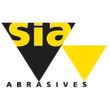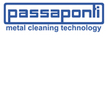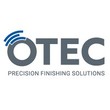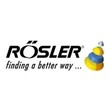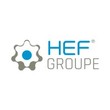|
|
|
 |
Innovations for Fully Biological Waste Water Treatments
|
| Year established : |
1933 |
Business : |
Manufacturer |
 New solutions for global waste water treatment New solutions for global waste water treatment
Bergmann Group presents innovations for worldwide water purity.
Bergmann Group presents innovations for worldwide water purity. One of them is the prototype of a plastic tank which can cheaply be manufactured and transported. Thus, the decentralized clarification technology WSB® clean reaches every corner of the earth. The new control system with GSM module helps to monitor plants over large distances, to adjust them via PC or to immediately react to failures. The modular cleaning stages also contribute to this flexibility. They purposefully eliminate specific pollutants in waste water up to a point where it can be reused. Private users, municipalities and tourist institutions profit from these technologies.
Sewage treatment is a global challenge.
What requirements does a clarification technology have to meet so that it can solve this task in a decentralized fashion for all nations of this world? To answer this elementary question the Bergmann group looked in detail at the complex, often varying requirements on waste water treatment in order to further develop the “turbulent fluid bed biofilm process” (WSB®). The fully biological clarification solution has repeatedly proven that its cleaning performance remains stable under very differing climatic conditions. From long, cold winters in to continuous heat in . That alone, however, does not turn WSB® clean into a globally usable technology yet...
Specific solutions which adapt flexibly.
Although it is a worldwide task, the treatment of waste water requires individual solutions which take the most different climatic, geographical and social requirements into account: Big heat and low temperatures complicate the treatment process of industrially and privately used water. The actual waste water and concentration of contents materials can be very different. In one case, the contained substances are classed as pollutant and elsewhere as a nutrient. Such as phosphorus that leads to eutrophication in waters. In agriculture, on the other hand, it is an elementary plant nutrient. However, there are still more factors which need to be considered. Such as adequate maintenance of decentralized clarification plants - an essential factor for the treatment quality - which becomes uneconomical over large distances. Furthermore, in developmental and threshold countries, financial restrictions make technologies and structural measures exorbitantly expensive.
The demands on globally usable clarification systems.
And that is not enough, the world is becoming increasingly mobile and so it is difficult to predict how settled people are, how large the fluctuation will be in an area and which migration movements arise from that. Solutions are required that flexibly adapt to such unforeseeable developments, that are easily installed and de-installed and can be easily transported without special logistics. An all-round reliable clarification process has to adapt again and again to varying uses. Be it because the users are absent for a longer time period and the plant completely rests, or because a party increases user numbers at short notice. Waste water should also be able to be treated such that it can be immediately re-used following the treatment process. Especially in arid regions a decisive factor that, however, also plays an important role in areas with increased water protection sanctions.
Answers for a primary task of mankind.
With the WSB® process, developed at the end of the nineties, the Bergmann group created a sustainable and efficient clarification technology. The feed-back for the environmental technology can be seen in continuously rising sales, growing international partner circles and the fact, that the waste water treatment technology meanwhile is used over 25000 times worldwide. In order for the advantages of the WSB® technology to continue contributing to global waste water treatment, the above mentioned questions have to be answered. Trade visitors will find out what the answers are for the first time on IFAT 2008.
New plastic tank facilitates global technology usage.
One answer dedicates itself to the expenditure with which the clarification solution can be exported and used at its destination. The Bergmann group concentrated on the research for a load-bearing plastic tank made from a minimum of materials that makes a clarification tank which can be easily installed. This tank is also supposed to be easily transportable in large numbers. For example, 20 tanks, including the necessary systems engineering, ought to be shipped in one container. The tank will be available in two versions: As a monolith and a segment-tank. This consists of two halves, the separate covering and the lid as well as perpendicular partitions with U-beams for mounting. Due to the segment solution, the plastic tank is even easier to transport. The components are sealed at destination with a new process giving a fully-fledged clarification tank.
Joint effort of science and economy.
On the IFAT 2008, prospective customers can experience a first project study of the plastic tank. The current development stage results from the co-operation of the Bergmann group with the „Institute for General Engineering and Plastics Technology, professorship Structural Lightweight Construction and Plastics Processing” under the management of Prof. Kroll at TU Chemnitz as well as the Lätzsch GmbH from Kitzscher OT Thierbach near Leipzig specializing in plastics manufacturing. The institute of TU Chemnitz is responsible for the design of the clarification tank as well as the basic work for any future, large-volume manufacturing. The main challenge for the scientists is to develop a manufacturing process that makes production of large, transportation and weight-optimized quantities economical. Additionally, every individual tank has to meet the high expectations for service life, processing, density and the load requirements in the soil. For optimal transportation this tanks has to be stacked and yet be easy to install. This is supposed to fulfil a thought-out installation and joining concept. The implementation of the findings will be taken over by the Lätzsch GmbH. They have extensive knowledge in the processing of different plastics.
Control system for remote monitoring of the clarification technology.
Another innovation, which will be presented on the IFAT 2008 for the first time, is the new control system with integrated GSM module. The product was named WSB® easy and saves considerable costs in the on-going care of sewage treatment solutions. Not only are the transport costs for the technician saved, who is necessary to tune performance of the plant. This can sum up especially in remote municipalities and plots. But maintenance also becomes more efficient and reactive. Remote monitoring is particularly important in sparsely populated areas since a regular appraisal of the clarification plant is hardly doable here any other way.
Simple contribution to sustainable cleaning results.
The new control system increases the basic efficiency of WSB® clean. Deviations from the preset operational cycle can be immediately registered and repaired. An additional safety aspect is the power monitoring of the control system. It registers undercurrent, for instance due to a failed device, and over current, that results from a deadlocked pump or a component shortly before wear.
The control system is also protected against power failure. The internal buffer makes storage of all settings over several weeks possible. For the plant operator these features offer reliability and sustainable cost savings. The maintenance company profits from meaningful information about the state of the plant at any time. This information is easily deducible from the simple and self-explanatory control system. Without lengthy studies of manuals, the maintenance company can obtain error reports as well as the hours of operation of connected components via the control software. The control system is also characterized by the broad use: Beginning with the 4-RE plant reaching to clarification systems with over 1 000 connected users.
Tele-servicing brings efficiency increase.
The remote control WSB® easy is based on a GSM module that is installed in the control system and the maintenance company. It allows the maintenance technician to dial into the control system from his office in order to change the settings of the clarification plant, to read the log or analyze errors. There are different access rights available to the technician.
Thus he can give external supervisory authorities, such as the Lower Water Authorities, the direct look into the operating state of the plant via the control system. With this function, the independent test of the cleaning performance is simplified since time and money are saved. From summer 2008 onwards, the software of the new control system for WSB® clean is expanded by a fleet management function.
It enables the maintenance companies to determine the operating state of hundreds of small sewage treatment plants within the shortest time and to sort the data then according to priority in order to determine the optimal route for the individual technician. However, the control system also becomes active when there are problems. The error report is despatched as text message via the GSM module. The text message immediately arrives on the cell phone of the responsible technician and can also reach him in as an E-mail. It not only shows him the error number, but also a short text about the kind of error. A dongle is used in order to safeguard the tele-servicing against unauthorized accesses. This is necessary for the start of the PC software.
Cleaning modules for flexible elimination of pollutants.
The elimination of pollutants in private and municipal waste waters is influenced via the control system. Their kind and concentration is subject to strong variations. A solution which would pay justice to all possible requirements for pollutant-elimination would be over-designed and expensive. The clarification solution has to individually adapt to the actual cleaning requirements. For the flexible adaptation of WSB® clean to further-reaching cleaning requirements, modular cleaning stages were developed in 2007 by the Bergmann group and brought on the market. On the IFAT 2008, these innovations are presented to the experts for the first time. Each one of these modules purposefully eliminates certain pollutant classes. Clarification plants in water protection areas have, for example, got to achieve much higher cleaning results in order to adhere to strict EU regulations. In these areas, the cleaning stage for phosphorus elimination can be utilized amongst other things. It is simply integrated into the regular, possibly already existing, WSB® clean solution.
Regenerative water cycle through sanitation.
The clarification technology can just as easily be broadened by the sanitation stage. Through a novel ceramic membrane filter a cleaning result is achieved that meets the requirements for bathwater quality because the majority of germs in the waste water are removed. A further advantage of the specific membrane technology is its self-cleansing mechanism through which a low-maintenance operation with high endurance can be achieved. Due to increasing water prices and increasing environmental awareness, this solution is not only interesting in arid regions but also for broad population circles. The water treated with sanitation can be used for the garden, the toilet flush or in the washing machine.
Solution for tourist water problems.
WSB® clean with sanitation stage is also a valuable supplement for tourist facilities, such as hotels and vacation resorts. Attractive tourist destinations are mostly found in sunny and arid areas. The idyllic location is arid and has high water consumption. Here, the reuse of used water is of elementary importance in order to reliably supply the extensive irrigation system and intensively used toilets. At the same time a technology is required which can cope with considerable usage variations during the course of the year. While the object is probably totally occupied in the main season and running the clarification plant at full load, during the low season and winter months it rests almost completely. WSB® clean is optimally prepared for these variations. The cleaning performance is achieved by a biofilm which has sufficient reserve capacities, in order to cope with short term overloads. If the plant rests over a longer time period, the micro-organisms of the biofilm do not die, but also rest, ready to reactivate their reliable cleaning performance at any time. The fully biological clarification technology is also an essential argument for the increasingly sensitive customer. The middle class, which dominates in tourism, pays more and more attention to ecological aspects. By using this waste water treatment, the hotel is able to signal, that it has understood the signs of the times. A sector which significantly influences water cycles now also finds an entry into the considerations for globally usable clarification technologies.
Bergmann Waste Water Engineering is part of the Bergmann Group. All businesses in this group have a common goal: they search for the simplest and most robust solutions to complicated construction problems. In this regard we can proudly look back on a 75 year company tradition. Our original roots lie in the production of building materials such as concrete and sand as well as finished concrete elements.
Innovations for Fully Biological Waste Water Treatments
Since the beginning of the 90s we have also become involved in the research of solutions for de-centralised water treatment plant. As we are not only interested in the economics and future application of the processes but also our environment, we have committed ourselves to fully biological waste water treatment solutions. Due to our long engineering tradition and quality of our products we are now one of the leading suppliers of waste water treatment technologies.

| The new control system The new control system WSB® easy for efficient remote monitoring of fully biological clarification technologies. | 
| The plastic container The plastic container – cost efficient and simple to export - as monolith and segment tank (right). | |
|
|
















 +49 (0)37381-86 10
+49 (0)37381-86 10



